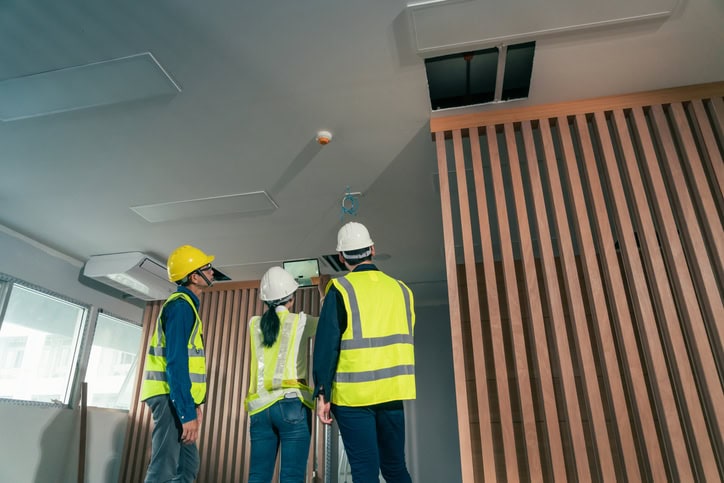Predictive maintenance is reshaping how Australian facilities are managed, moving beyond reactive repairs to proactive asset care. For facilities managers juggling uptime, cost efficiency, and compliance, predictive maintenance offers a smarter, data-driven approach to minimise downtime, extend asset life, and streamline operations.
In this article, we’ll explore why predictive maintenance is the future of facilities management, how it works, and how it delivers real value to Australian businesses.
Table of Contents
ToggleWhat is Predictive Maintenance?
Predictive maintenance (PdM) uses real-time data, sensors, and analytics to monitor the condition of equipment and infrastructure. Unlike routine maintenance, which relies on scheduled servicing, PdM identifies potential issues before they lead to failures, enabling timely intervention.
In simple terms, it means fixing problems before they disrupt your operations.
The Evolution: From Reactive to Predictive
Facilities management has traditionally been reactive, waiting for something to break before fixing it. Over time, this shifted to preventative maintenance with scheduled servicing.
However, both approaches come with inefficiencies:
- Reactive maintenance leads to costly downtime and emergency repairs.
- Preventative maintenance can result in unnecessary servicing, inflating costs.
How Predictive Maintenance Works
Predictive maintenance relies on:
- IoT Sensors: Installed on critical assets like HVAC, lifts, and electrical systems to collect real-time performance data.
- Analytics & AI: Platforms analyse this data to detect patterns, anomalies, and predict failures.
- Automated Alerts: Facilities managers receive timely notifications to address issues before they escalate.
- Integration with Building Management Systems (BMS): Centralised visibility and control over building assets.
This proactive approach empowers facilities managers to optimise maintenance schedules based on actual asset condition, not assumptions.
Benefits of Predictive Maintenance for Facilities Managers
Reduced Downtime
Predictive maintenance significantly reduces unplanned downtime, with case studies showing improvements of up to 15% in facility operations efficiency, and capacity unlocks of 4% or more depending on the asset and industry.

Increased Productivity
By addressing maintenance needs before they cause failures, facilities teams can operate more efficiently, focusing on strategic initiatives rather than constant firefighting.
Long-Term Cost Savings
While PdM involves an initial investment in sensors and software, it delivers significant cost savings through:
- Fewer emergency repairs
- Extended asset lifespan
- Optimised resource allocation
- Reduced energy consumption by maintaining peak asset efficiency
Real-World Applications in Australian Facilities
Predictive maintenance is delivering value across Australian industries:
- Healthcare facilities ensuring uptime of critical medical equipment.
- Commercial buildings optimising HVAC and electrical systems.
- Retail centres reducing operational disruptions and enhancing customer experience.
- Manufacturing sites preventing costly production halts.
- Educational institutions maintaining safe and functional learning environments.
These proactive strategies also support compliance with Australian WHS and environmental regulations.
The Role of IoT and Automation in Predictive Maintenance
IoT and automation are the backbone of modern predictive maintenance. Key technologies include:
- Vibration and thermal sensors for mechanical equipment.
- Smart meters for real-time energy monitoring.
- Cloud-based analytics platforms for predictive insights.
- Automated maintenance scheduling through BMS integrations.
Facilities teams can significantly reduce site visits by implementing IoT-enabled remote diagnostics and predictive maintenance. According to industry reports, such strategies can resolve up to 50% of issues remotely, leading to substantial cost savings and increased operational efficiency.
Source: Manufacturing Digital
Overcoming Adoption Barriers in Australia
Common adoption challenges include:
- Upfront investment: Start small, focusing on high-impact assets, and scale gradually.
- Skills gap: Partner with providers offering implementation support and training.
- Data security concerns: Choose vendors compliant with Australian cybersecurity standards.
JKFM helps clients navigate these challenges with tailored solutions that fit operational budgets and business goals.
Partnering with JKFM: Your Predictive Maintenance Experts

At JKFM, we specialise in end-to-end facilities management with a strong focus on predictive maintenance. Backed by the scale of Jani-King Australia and the agility of a boutique provider, we offer:
- Asset condition audits
- IoT-enabled maintenance solutions
- Integration with existing BMS platforms
- Compliance assurance with Australian standards
- Ongoing monitoring and performance reporting
Our goal is simple — to keep your facilities running smoothly, efficiently, and without costly surprises.
FAQs About Predictive Maintenance
Yes, with retrofitted sensors and strategic upgrades, predictive maintenance can be effectively implemented in both new and older facilities.
By preventing costly breakdowns, reducing emergency repairs, and extending asset life, it lowers long-term maintenance costs and energy bills.
Initial costs depend on the scale of implementation, but targeted rollouts focusing on critical assets deliver fast ROI.
Absolutely. It supports compliance with WHS, NABERS, ISO 14001, and other Australian standards through automated reporting and proactive risk management.
Why Predictive Maintenance is Essential for Future-Ready Facilities
Predictive maintenance is no longer a luxury, it’s a necessity for facilities looking to stay competitive, compliant, and cost-effective. In an environment where downtime equals lost revenue and rising operational costs pressure bottom lines, PdM offers a smarter way forward.
Facilities managers who embrace predictive maintenance today are setting their operations up for long-term success.






